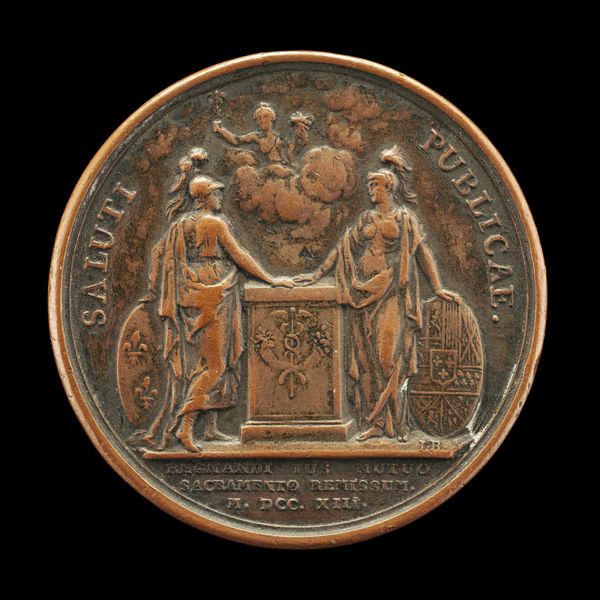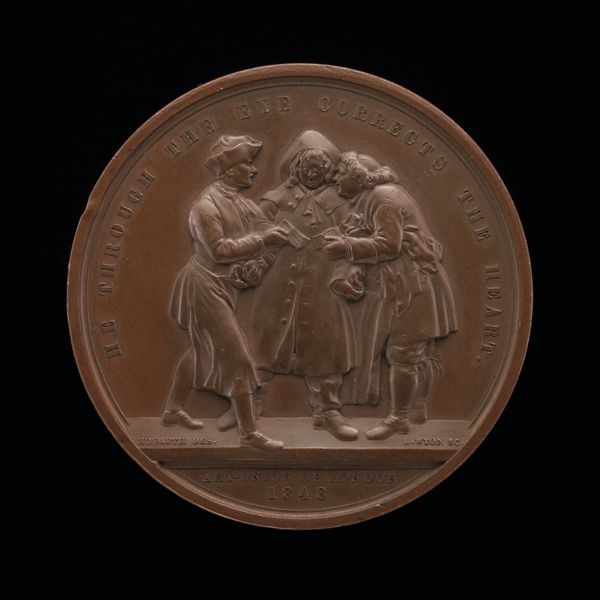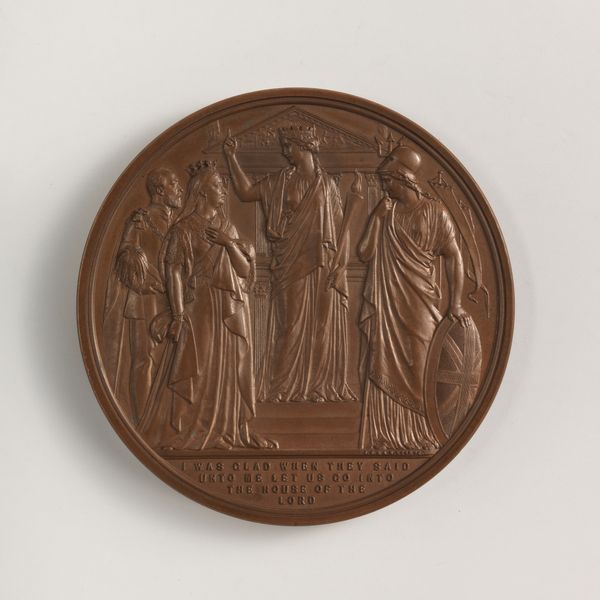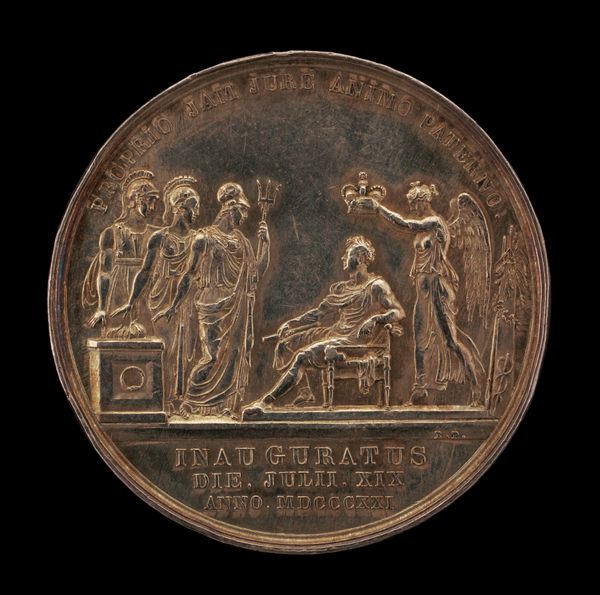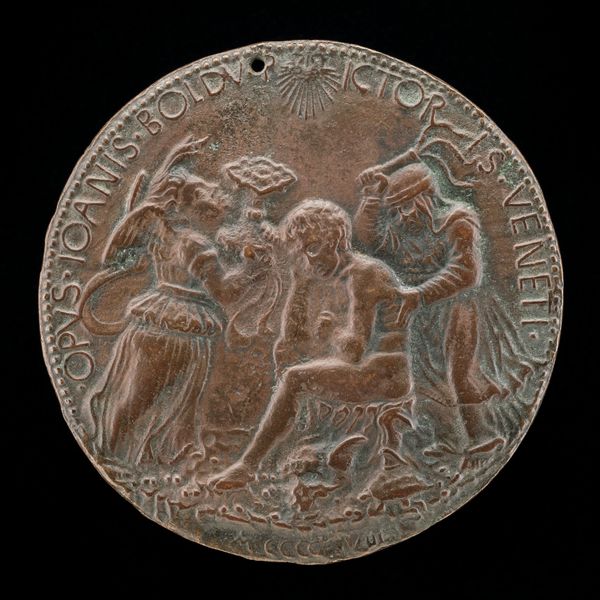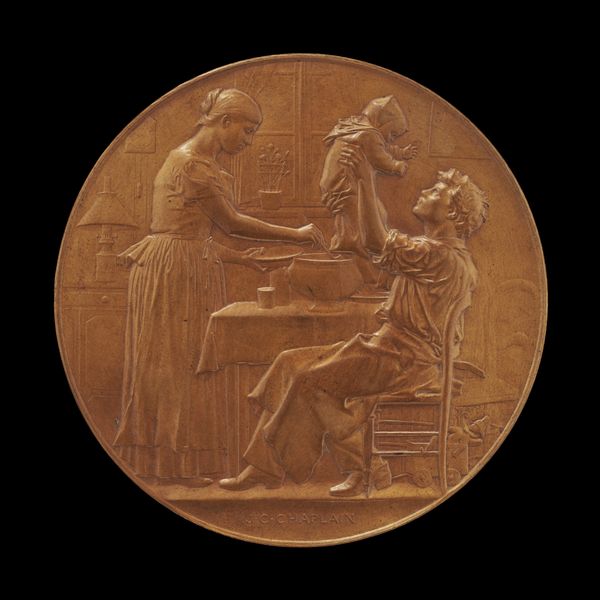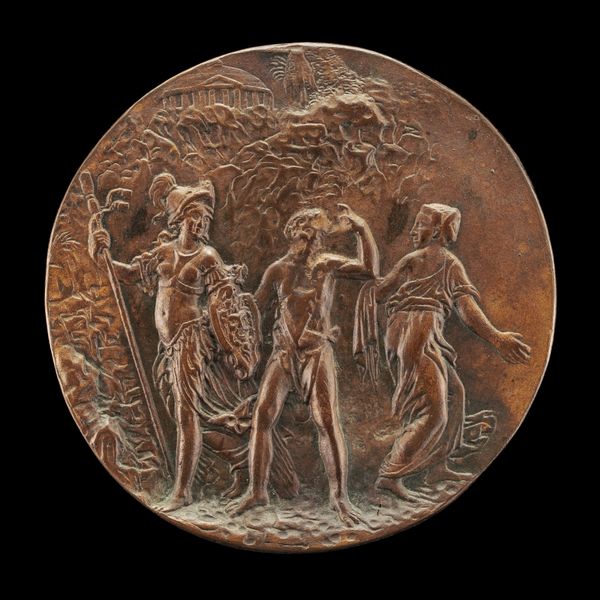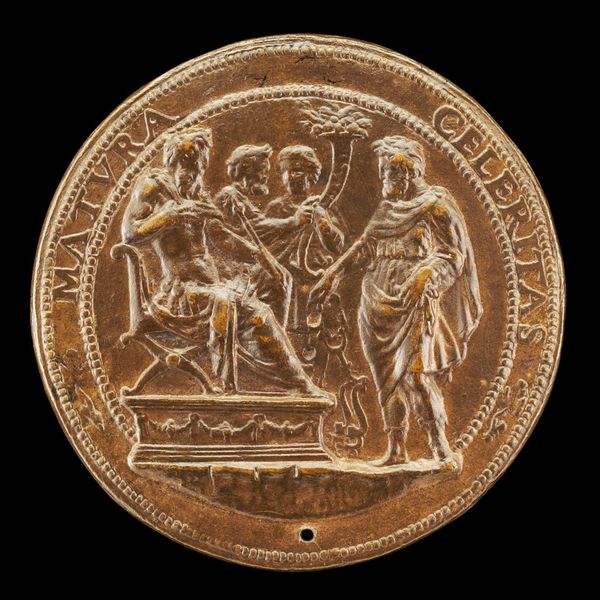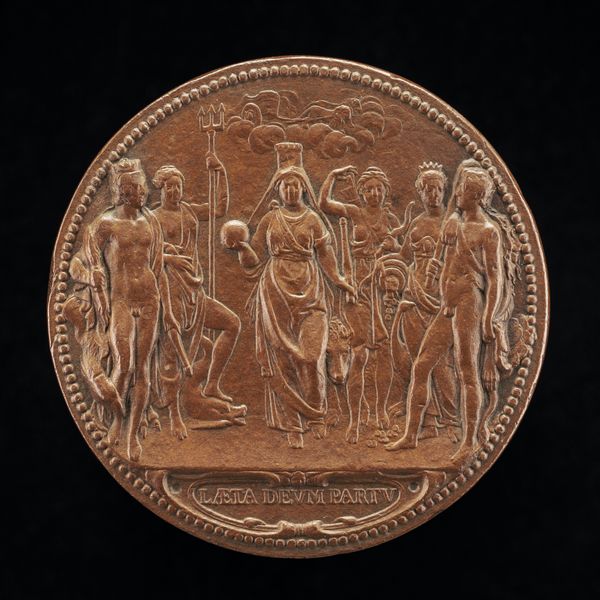![Justice and Faith [reverse] by Mathias-Nicholas-Marie Vivier](/_next/image?url=https%3A%2F%2Fd2w8kbdekdi1gv.cloudfront.net%2FeyJidWNrZXQiOiAiYXJ0ZXJhLWltYWdlcy1idWNrZXQiLCAia2V5IjogImFydHdvcmtzLzUzZDcxMmI2LWVjZjItNDEwMS05MDhlLWI3MzFiZmZjNzFmMi81M2Q3MTJiNi1lY2YyLTQxMDEtOTA4ZS1iNzMxYmZmYzcxZjJfZnVsbC5qcGciLCAiZWRpdHMiOiB7InJlc2l6ZSI6IHsid2lkdGgiOiAxOTIwLCAiaGVpZ2h0IjogMTkyMCwgImZpdCI6ICJpbnNpZGUifX19&w=3840&q=75)
relief, bronze, sculpture
#
neoclacissism
#
allegory
#
sculpture
#
relief
#
bronze
#
sculpture
#
history-painting
Dimensions: overall (diameter): 5 cm (1 15/16 in.) gross weight: 65.3 gr (0.144 lb.) axis: 12:00
Copyright: National Gallery of Art: CC0 1.0
This bronze medal was made by Mathias-Nicholas-Marie Vivier, likely in 1823, and presents the allegorical figures of Justice and Faith on its reverse side. The medal was die struck – a process involving hammering metal between two hardened steel dies. This technique enabled the relatively efficient production of multiple, identical commemorative objects. Its smooth, reflective surface, combined with the sharp relief of the figures, is characteristic of this process. Note how the inherent qualities of the bronze—its weight, color, and capacity to capture fine detail—contribute to the medal's overall impact. The inscription and imagery suggest it was commissioned to commemorate a solemn event, possibly the restoration of religious practices. The figures of Justice, with her scales, and Faith, with her cross, evoke core values of post-revolutionary society. By focusing on materials, making, and context, we can appreciate how this object transcends mere decoration, reflecting deeper social currents.
Comments
No comments
Be the first to comment and join the conversation on the ultimate creative platform.

